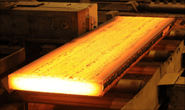Economy

Brazil’s Usiminas to Restart Idled Blast Furnace in Late Q2
Written by David Schollaert
April 13, 2021
Usinas Siderurgicas de Minas Gerais (Usiminas) is set to bring an idled blast furnace back online in June at their Ipatinga plant in Brazil’s southeastern state of Minas Gerais, according to Steel Market Update sources. Back in April 2020, Usiminas idled the #1 and #2 blast furnaces due to lower demand resulting from widespread closures and mitigation efforts to counter the spread of COVID-19.
Usiminas, one of the largest flat steel producers in Latin America with an annual capacity of 9.5 million metric tons, originally brought their #1 blast furnace back online this past August, and recent intel confirms they are restarting their #2 blast furnace this coming June. Usiminas did not immediately respond or offer comment.
Both furnaces have an annual capacity of 1 million metric tons each, and the added furnace should provide further slab volumes and a much needed lift to their Cubatão rerolling facility in Brazil’s southeastern state of São Paulo. This is a positive sign to both the Brazilian and U.S. domestic steel industries alike, as Usiminas produces nearly 30% of total steel output in Brazil.
The potential for added Brazilian slab availability is a welcomed development for a U.S. marketplace that has been burdened by pent-up demand, limited supply, extended lead times, and historically high domestic prices. But relief may be limited. Regardless of how much added slab may be produced at Usiminas or make its way onto U.S. soil, quota restrictions will remain the restrictive factor.
Under Section 232, the annual quota for Brazilian slab in 2021 is 3.5 million metric tons. Through the first quarter of 2021, nearly a third of the annual quota was met. Imported slab from Brazil totaled 979,313.90 metric tons through March, and preliminary license data for just the first week of April indicates that Q2’s quota is filling quickly, as it’s already at 179,958.3 metric tons.
By David Schollaert, David@SteelMarketUpdate.com

David Schollaert
Read more from David SchollaertLatest in Economy

US construction spending levels off in March
Construction spending in the US in March was basically steady from the previous month but showed notable year-on-year (y/y) growth.

ISM: Manufacturing sector contracted in April
The Index had briefly showed expansion in March, but has indicated a contracting manufacturing sector for 17 of the last 18 months.

Chicago Business Barometer falls to 16-month low
The Chicago Business Barometer slipped further in April, now at the lowest measure recorded since November 2022.

Leading nonres indicator falls to more than three-year low
An important economic indicator for the nonresidential construction industry declined in March to its lowest point in more than three years.

Fed Beige Book: Economy improves, but manufacturing weak
While general economic conditions across the US improved slightly over the last six weeks, activity in the manufacturing sector was weak, according to the Fed’s latest Beige Book report.
